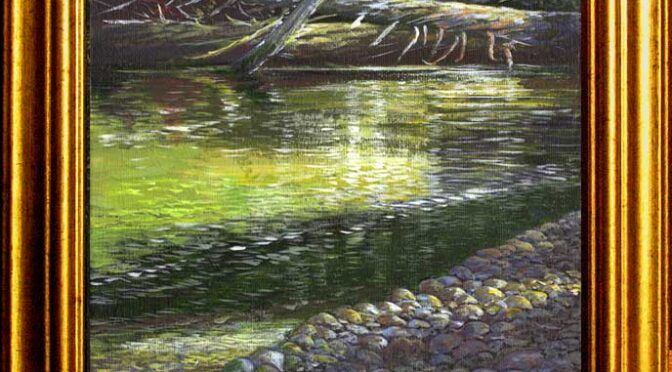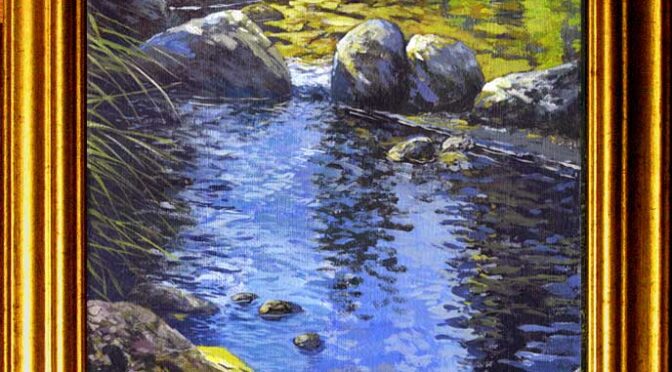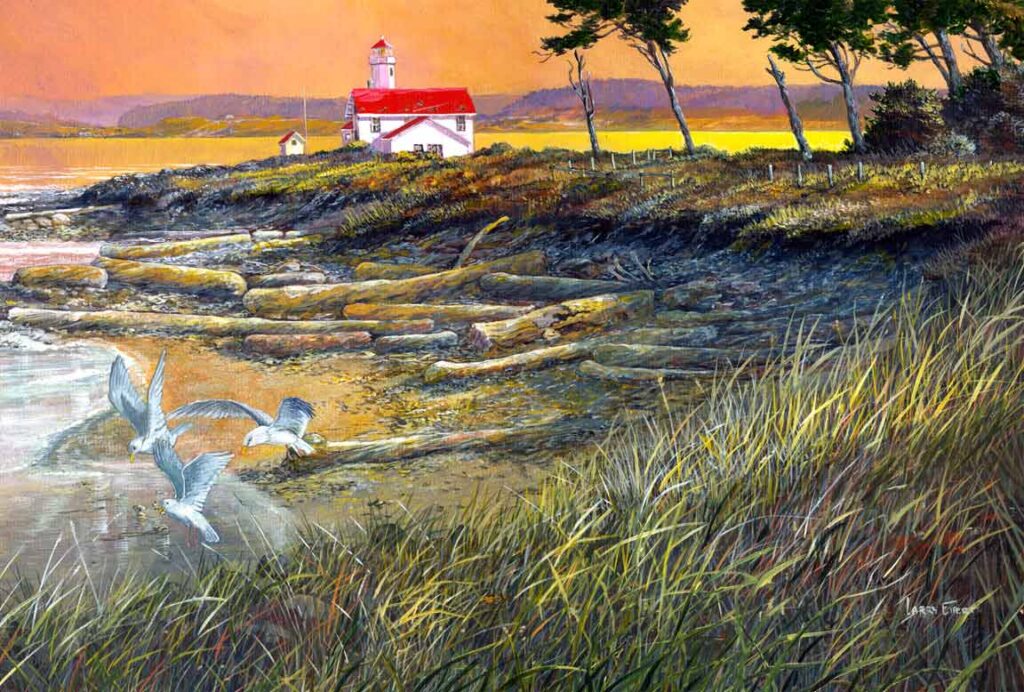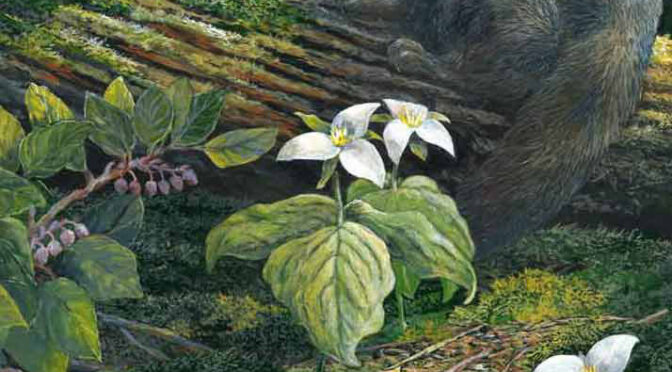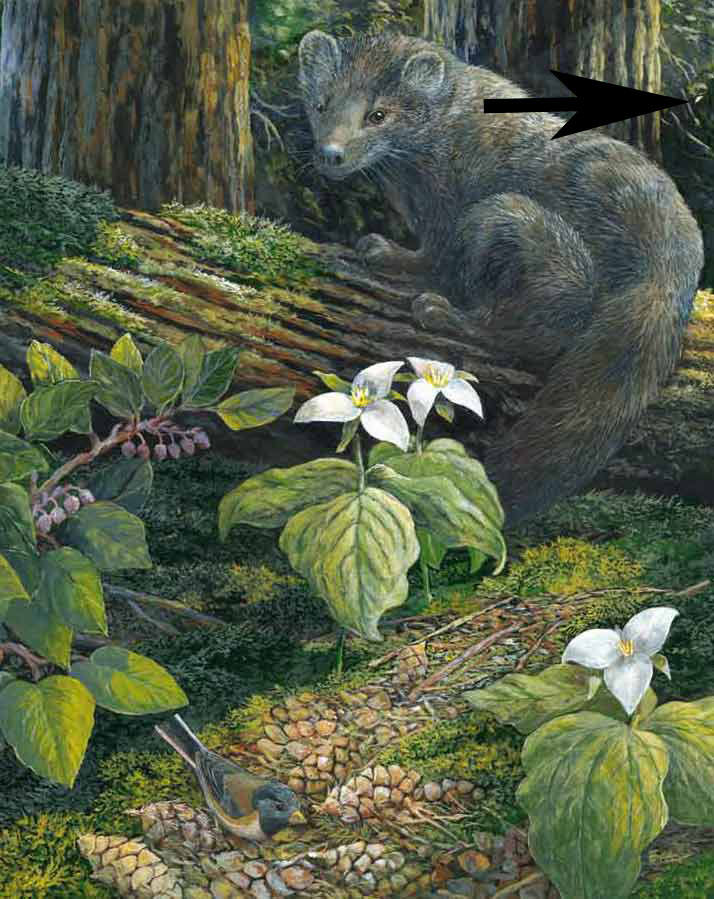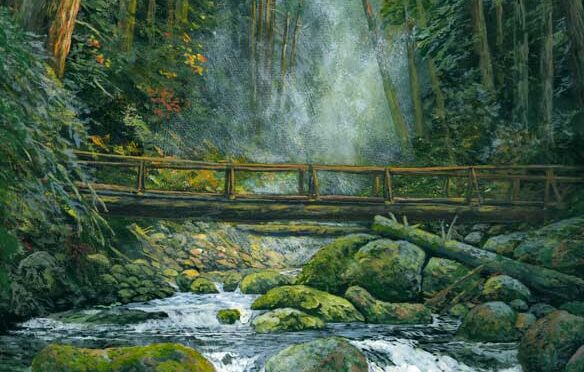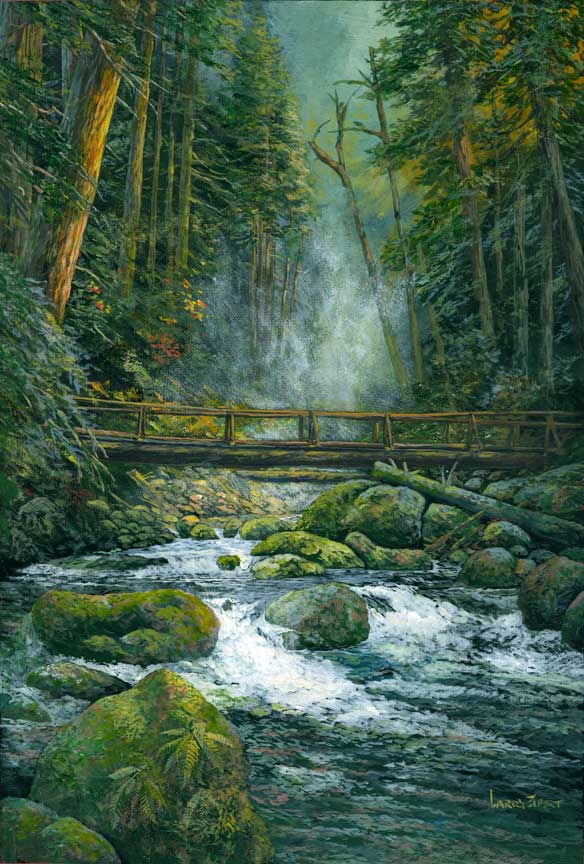If you click on the image, it should enlarge for a better view.
Someone called me to ask if these small paintings were actually prints. Nope, these are originals. We might make a few prints later, but these on the blog are the real-deal. I’ve always enjoyed doing these smaller studies and have painted thousands of them through the years.
This huge pile of cedar and hemlock trees, a log jam, was across the Nooksack River from a campground we stayed in. Placid water was there at the time, but I’ll bet the river that created this wood pile was something else again when the Nooksack built it. Imagine the power it took to pile these huge trees up against the shore. These log jams are now understood to be critical to healthy fish habitat in mountain rivers, and in some restoration projects, log jams are actually artificially created. On their upstream migrations to spawn, adult salmon rest under these branches and trunks, safe from predators. Young salmon and trout safely hang out here while they’re growing up and kingfishers sit atop the branches waiting for a smallish morsel to swim by.
As a painter, my eye was attracted to the color values and shadows. I liked the way the sun lit up the riverbed gravel with warm yellows and browns – and the way the cool blue foreground shadows colored the same gravel completely differently. Finally, I added the background log jam and standing conifers as the focal point shining brightly in full sun. So even if they’re a bunch of dead trees, this makes for a pleasing and complex composition, don’t you think?
This painting is varnished acrylic on linen canvas, 9″ x 12″ and $140 unframed.
The gold frame makes it a total of $180 and shipping adds just a bit more depending on your zone or if you take the frame.
Email us for details.
This one, like several others this month, won’t be listed on the main website, but will be only on the blog.
Thanks for reading this week.
Larry Eifert
Click here to go to our main website – packed with jigsaw puzzles, prints and other stuff.
Click here to check out what Nancy’s currently doing.
Or, send us an email to opt in or out of our email family – or just ‘talk’ with us.
